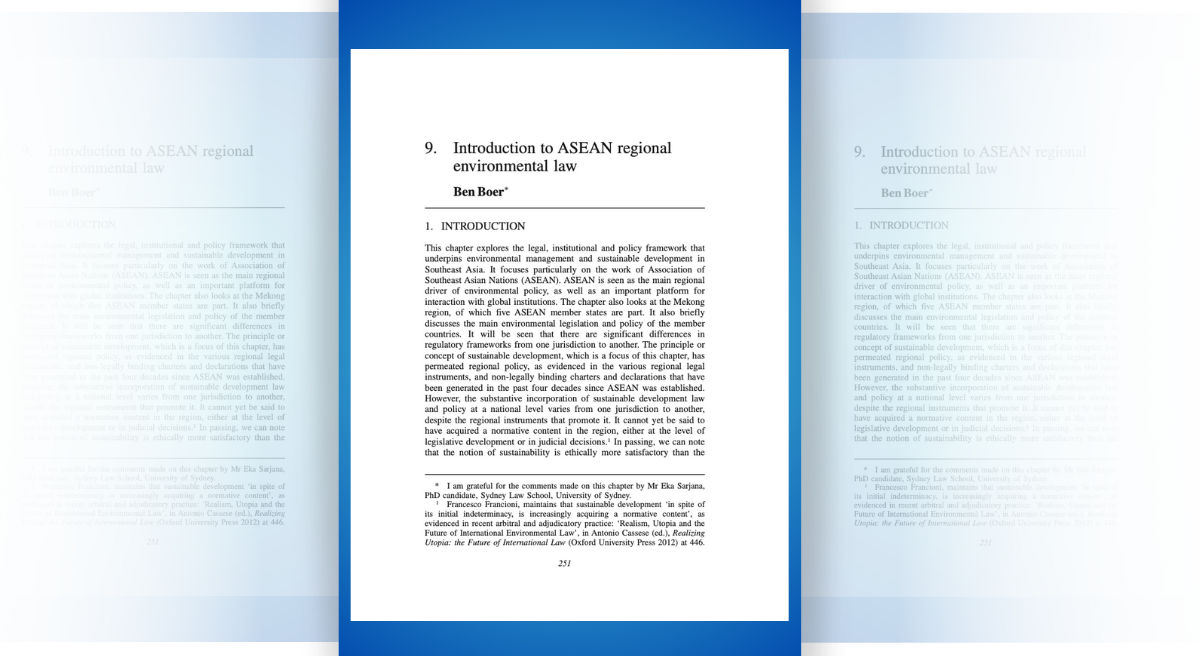Introduction to ASEAN Regional Environmental Law
This chapter explores the legal, institutional and policy framework that underpins environmental management and sustainable development in Southeast Asia. It focuses particularly on the work of Association of Southeast Asian Nations (ASEAN). ASEAN is seen as the main regional driver of environmental policy, as well as an important platform for interaction with global institutions. The chapter also looks at the Mekong region, of which five ASEAN member states are part. It also briefly discusses the main environmental legislation and policy of the member countries. It will be seen that there are significant differences in regulatory frameworks from one jurisdiction to another. The principle or concept of sustainable development, which is a focus of this chapter, has permeated regional policy, as evidenced in the various regional legal instruments, and non-legally binding charters and declarations that have been generated in the past four decades since ASEAN was established. However, the substantive incorporation of sustainable development law and policy at a national level varies from one jurisdiction to another, despite the regional instruments that promote it. It cannot yet be said to have acquired a normative content in the region, either at the level of legislative development or in judicial decisions.1 In passing, we can note that the notion of sustainability is ethically more satisfactory than the concept of sustainable development, but the latter term is the one that has taken hold in most policy documents and legislative enactments that deal with it.
The ASEAN region is host to high rates of endemic biodiversity, unacceptable levels of deforestation,4 high population growth in some countries, increasing wealth generation, high production rates and consumer consumption with a concomitant rise in natural resource use and energy demand, dangerous levels of transboundary pollution, depletion of marine fisheries and the potentially devastating impacts of climate change, particularly on islands and deltas. These factors, in combination, form the basis for analysis of legislative and policy initiatives in the context of sustainable development.
